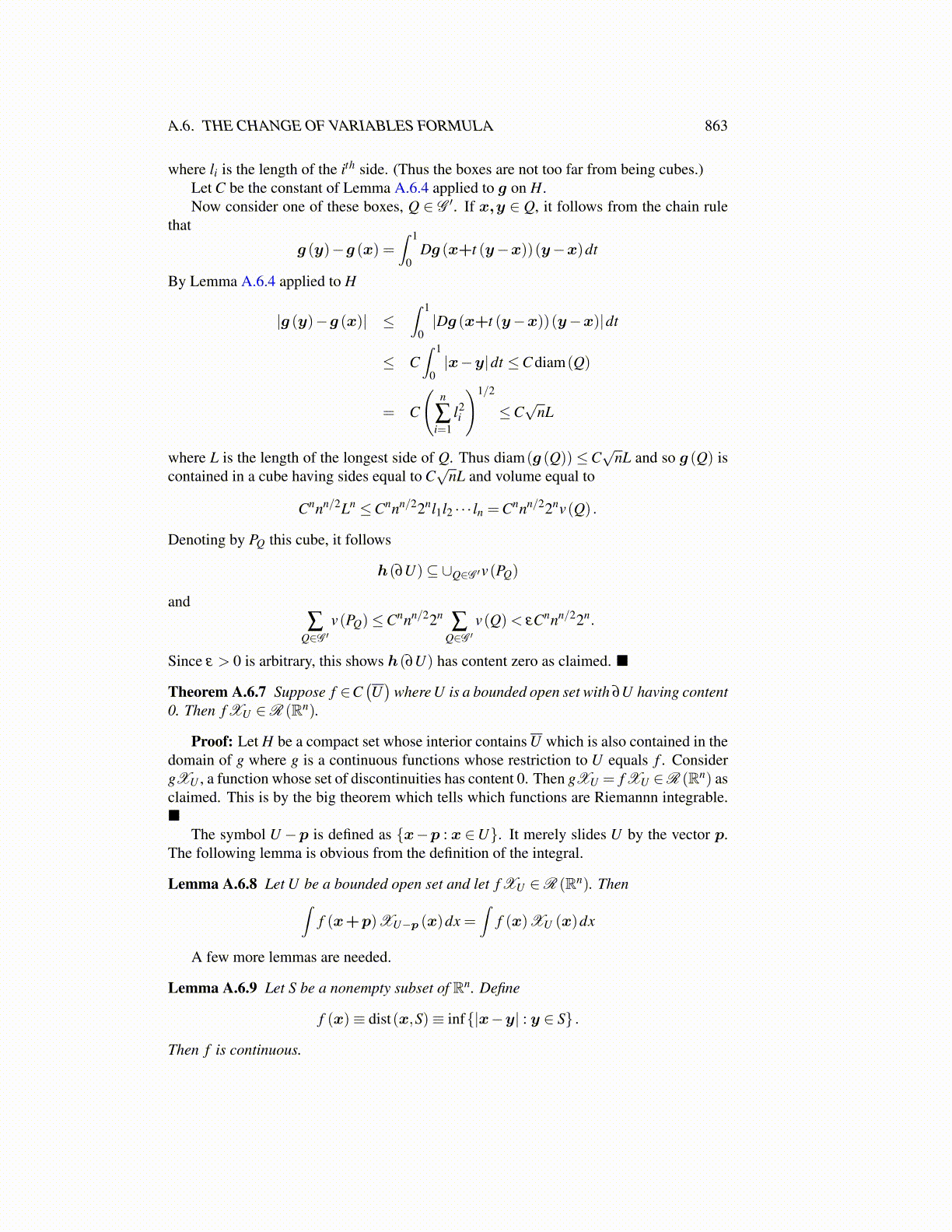
A.6. THE CHANGE OF VARIABLES FORMULA 863
where li is the length of the ith side. (Thus the boxes are not too far from being cubes.)Let C be the constant of Lemma A.6.4 applied to g on H.Now consider one of these boxes, Q ∈ G ′. If x,y ∈ Q, it follows from the chain rule
that
g (y)−g (x) =∫ 1
0Dg (x+t (y−x))(y−x)dt
By Lemma A.6.4 applied to H
|g (y)−g (x)| ≤∫ 1
0|Dg (x+t (y−x))(y−x)|dt
≤ C∫ 1
0|x−y|dt ≤C diam(Q)
= C
(n
∑i=1
l2i
)1/2
≤C√
nL
where L is the length of the longest side of Q. Thus diam(g (Q))≤C√
nL and so g (Q) iscontained in a cube having sides equal to C
√nL and volume equal to
Cnnn/2Ln ≤Cnnn/22nl1l2 · · · ln =Cnnn/22nv(Q) .
Denoting by PQ this cube, it follows
h(∂U)⊆ ∪Q∈G ′v(PQ)
and∑
Q∈G ′v(PQ)≤Cnnn/22n
∑Q∈G ′
v(Q)< εCnnn/22n.
Since ε > 0 is arbitrary, this shows h(∂U) has content zero as claimed. ■
Theorem A.6.7 Suppose f ∈C(U)
where U is a bounded open set with ∂U having content0. Then f XU ∈R (Rn).
Proof: Let H be a compact set whose interior contains U which is also contained in thedomain of g where g is a continuous functions whose restriction to U equals f . ConsidergXU , a function whose set of discontinuities has content 0. Then gXU = f XU ∈R (Rn) asclaimed. This is by the big theorem which tells which functions are Riemannn integrable.■
The symbol U −p is defined as {x−p : x ∈U}. It merely slides U by the vector p.The following lemma is obvious from the definition of the integral.
Lemma A.6.8 Let U be a bounded open set and let f XU ∈R (Rn). Then∫f (x+p)XU−p (x)dx =
∫f (x)XU (x)dx
A few more lemmas are needed.
Lemma A.6.9 Let S be a nonempty subset of Rn. Define
f (x)≡ dist(x,S)≡ inf{|x−y| : y ∈ S} .
Then f is continuous.